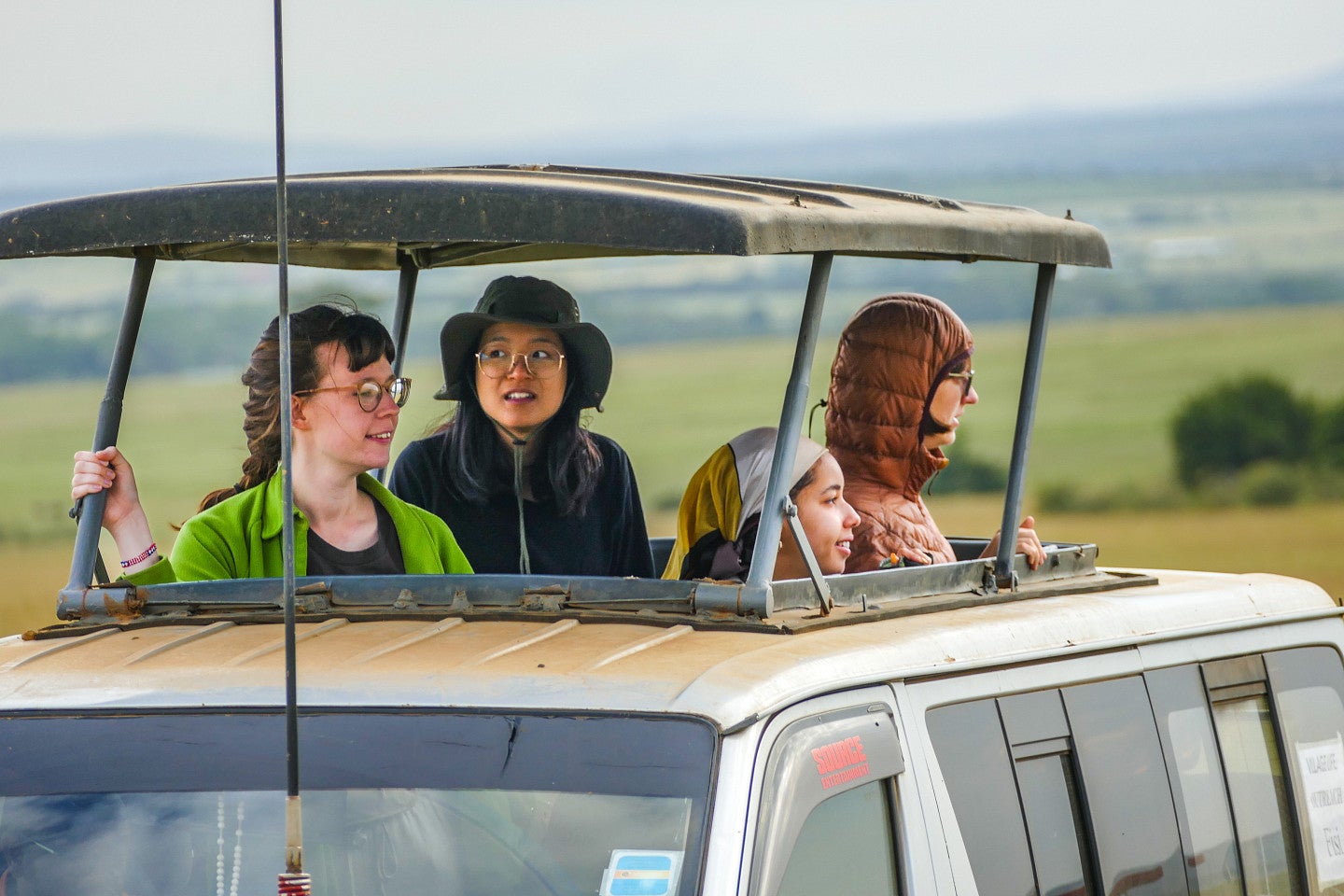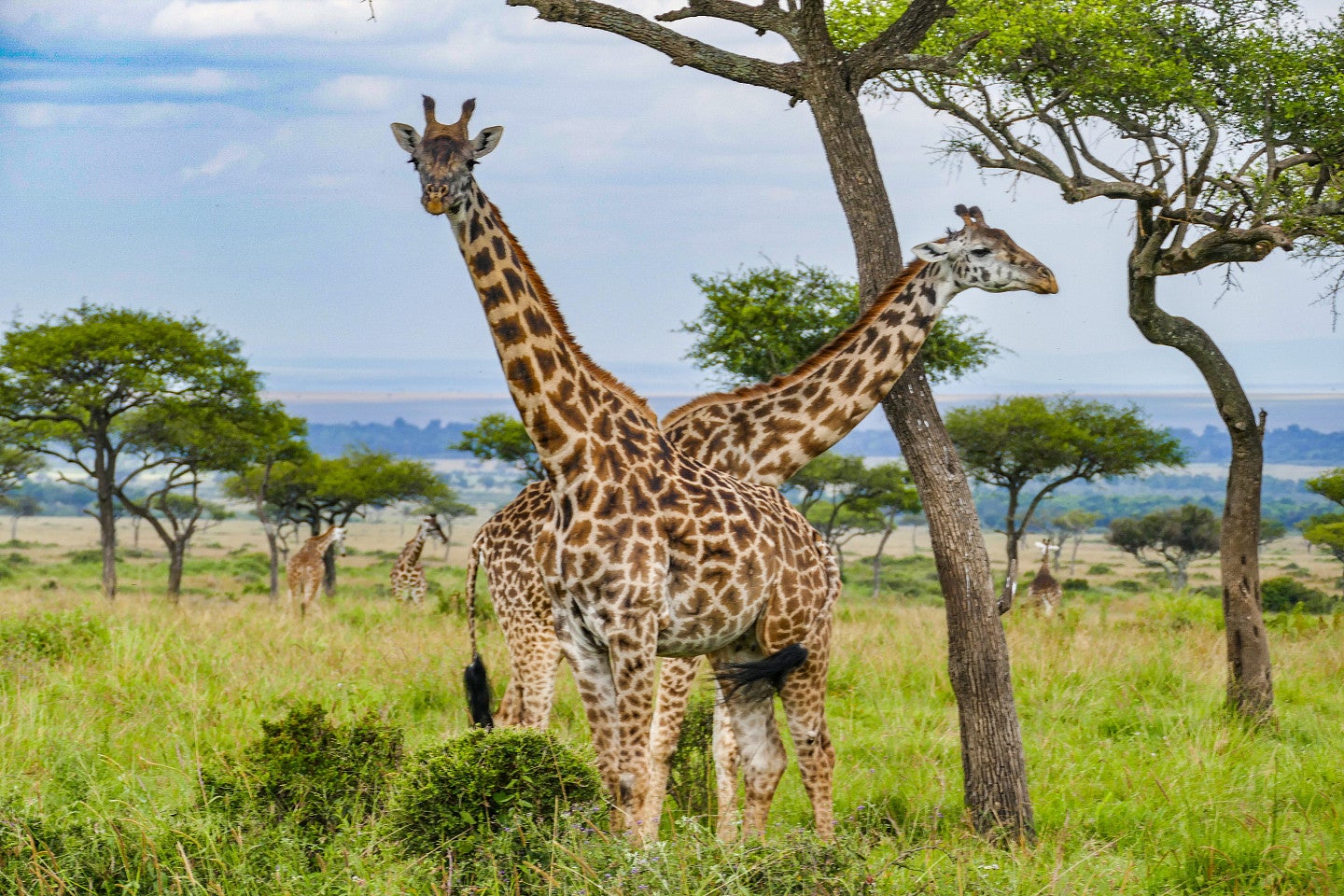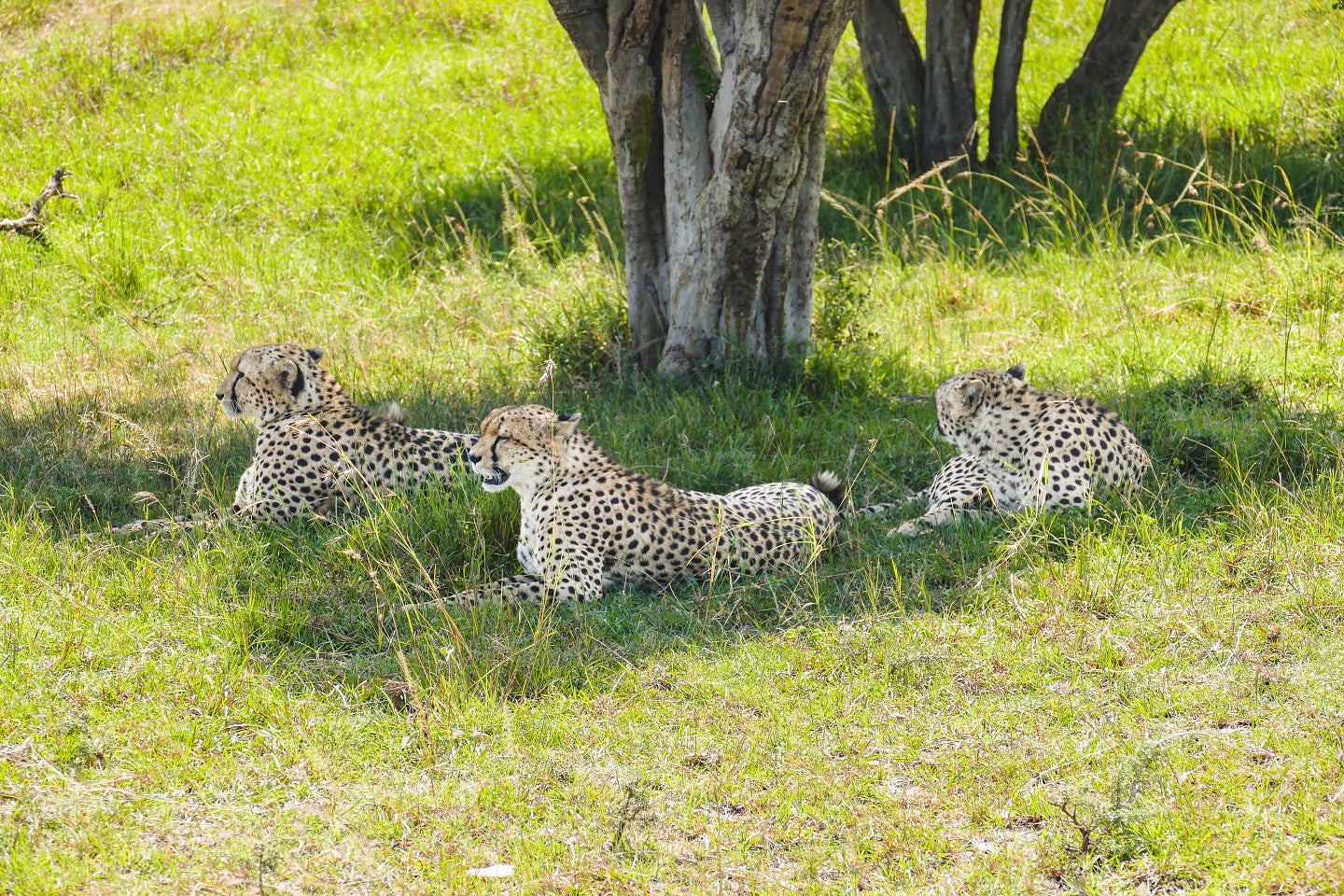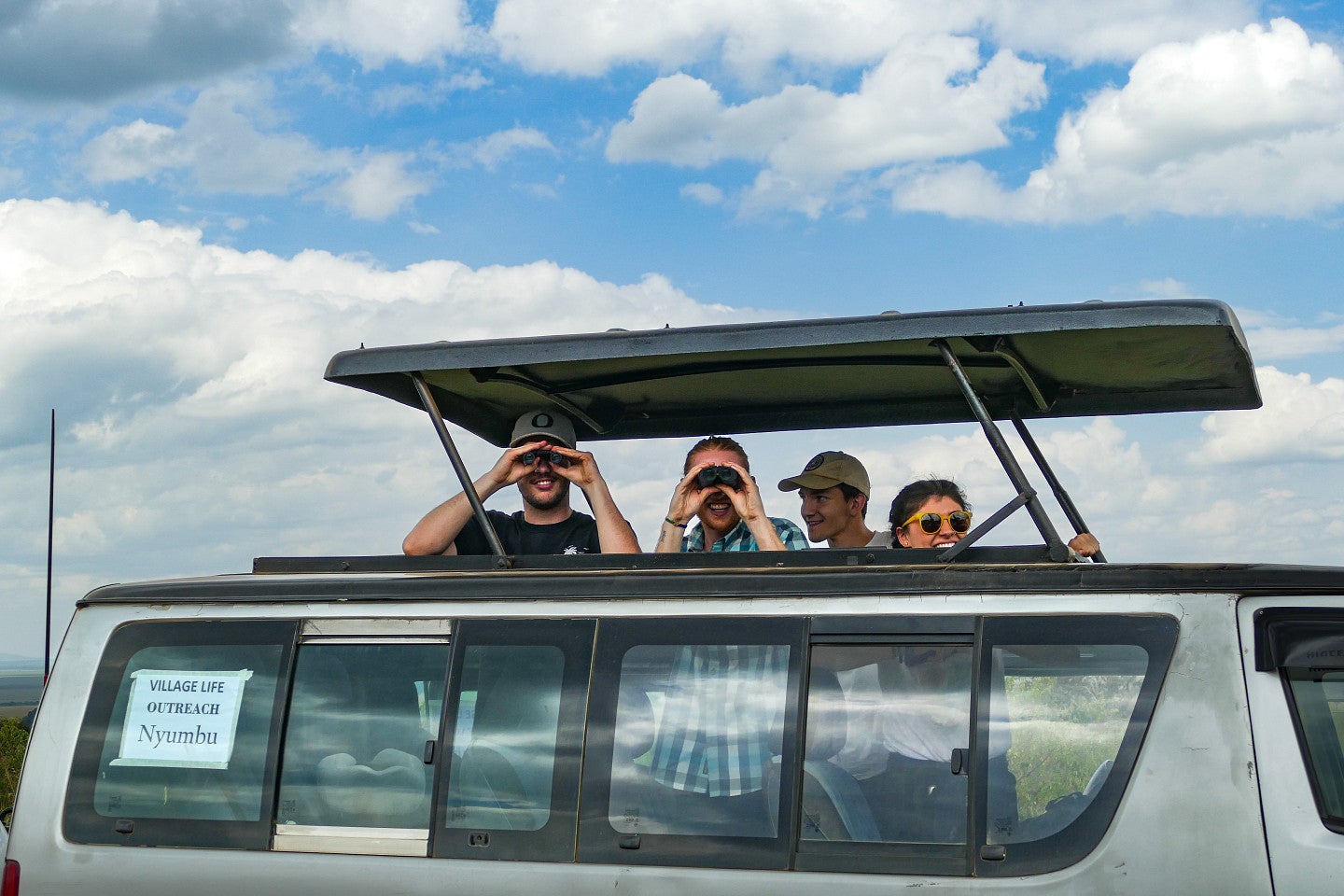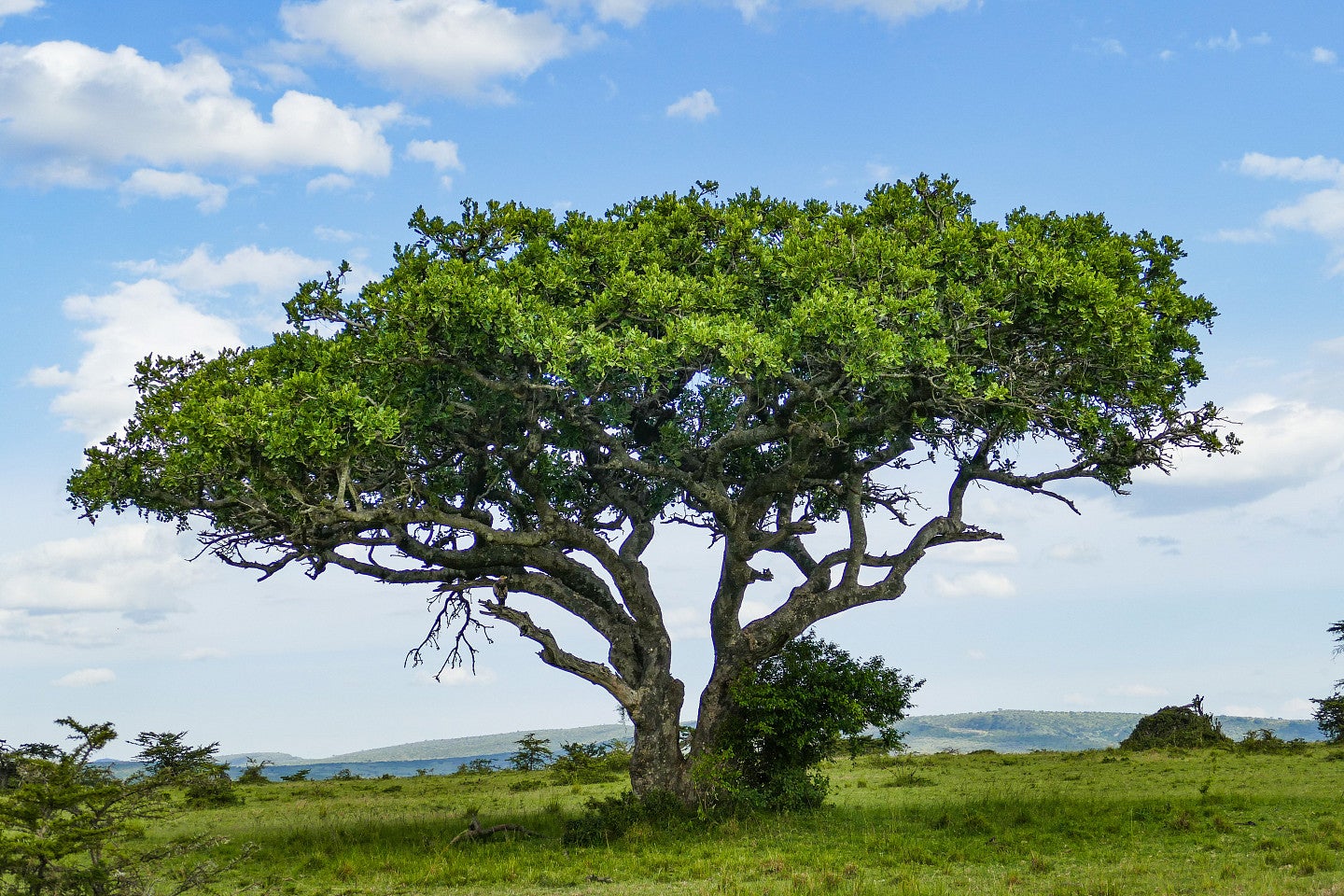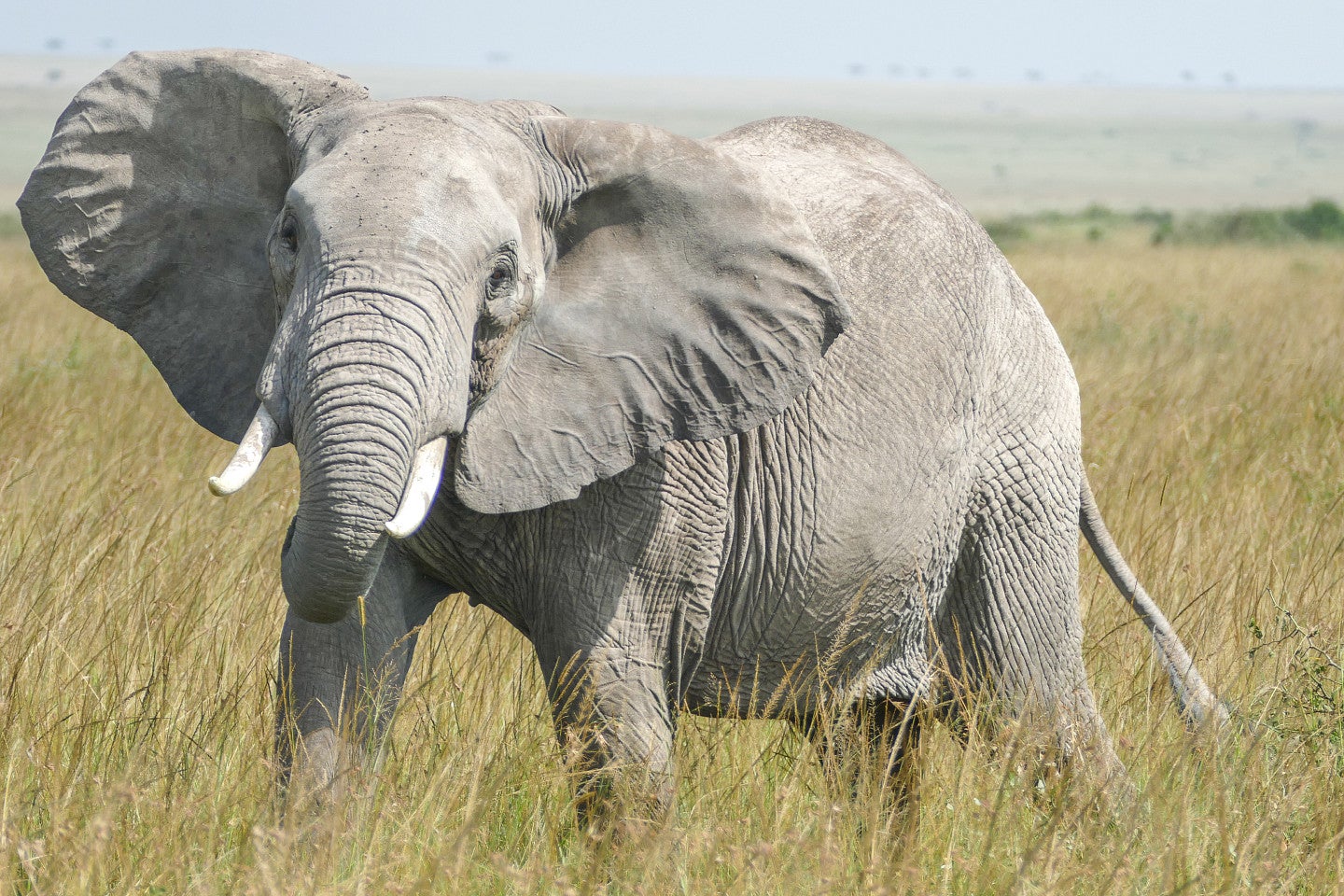
Photo courtesy of Michael Zaretsky
What does it mean to create?
Artists, architects, historians, nonprofit experts, and more at the University of Oregon’s College of Design seek to answer this question. Faculty and student interrogate and explore what it means to create and how one’s creativity could impact the real world. One of the ways that the college is able to create forward-thinking designers is through the use of unique, experiential and cross-disciplinary learning opportunities.
The School of Architecture & Environment was able to provide one such opportunity over the summer of 2022 thanks to the work of Architecture Department Head, Associate Professor Michael Zaretsky, and his connections with the community members in Tanzania. His work with the Tanzania community was influenced by his desire to do more as an architect.
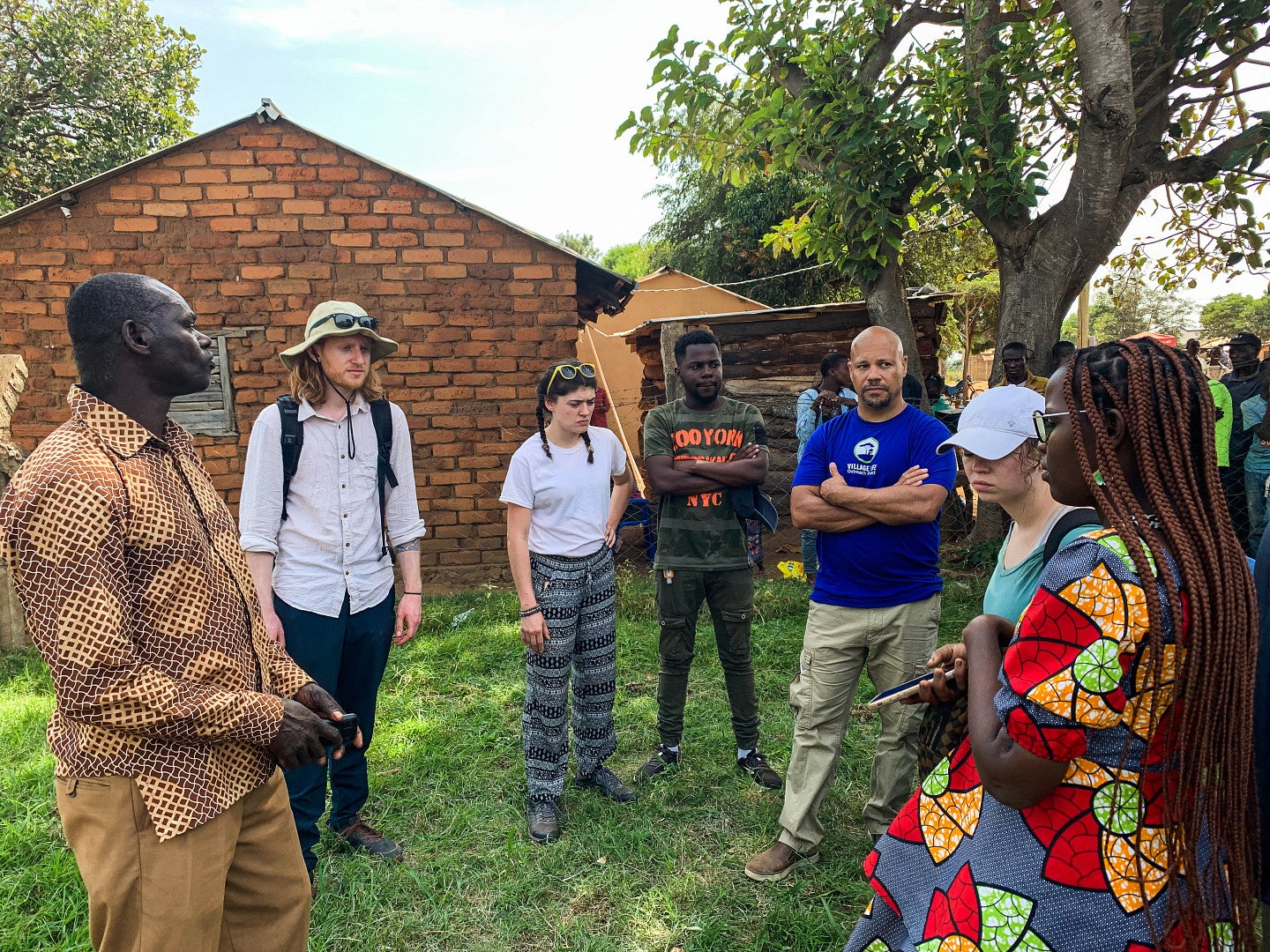
Photo courtesy of Michael Zaretsky
"I wanted to do work that wasn't possible in the typical architectural model, where you have a client with money and they pay for it," explained Zaretsky. "It's estimated that only about 1%-5% of the buildings that are produced in the world involve architects. It's very low because a lot of organizations, communities, and individuals can't afford architects. A lot of architects and other related fields have recognized this and are really working to try and meet this need. That's why I left practice to go into academia."
Zaretsky, a professional architect in the Public Interest Design field, wanted to do more. While a part of the faculty at the University of Cincinnati, Zaretsky received an architecture faculty-wide email looking for a faculty member who would be interested in working on a project in Tanzania. Zaretsky met with the head of the Village Life Outreach Project (VLOP), Dr. Chris Lewis, to discuss the project.
"[Dr. Lewis] had traveled to Shirati, Tanzania, to do a residency in 2002 and became very connected to a community there. He came back to Cincinnati and started a nonprofit in partnership with one in Tanzania named Shirati Health Education and Development (SHED). Initially, they engaged in health outreach but their involvement evolved over time," said Zaretsky. "There are three [Tanzania] villages that have committees that look at health, education, water, and sanitation issues in the villages and then they partner with VLOP and SHED to problem solve. [VLOP and SHED] weren't giving money, they were doing projects together, utilizing resources from the university to partner on those projects."
After successfully working with engineering to solve community water and sanitation issues, one of the villages reached out to VLOP with a request for a permanent health care facility. This plea triggered the 2008 email request to the University of Cincinnati's architecture faculty and Zaretsky lept at the chance to work on this community project.

Photo courtesy of Michael Zaretsky
"I led the design and construction of the Roche Health Center, with two years of research at the beginning of the project," explained Zaretsky. "First project was completed in 2011 and we have continued to build out that health center. I've had several groups of students come out to work, three groups from Cincinnati, one from [University of Texas Arlington], and one from the University of Oregon. I've also ran design studios in Cincinnati that saw students come over for about six months to lead projects on the ground [in Tanzania]. This experience is incredibly powerful for students and the community. Emily Roush-Elliott of Delta Design Build Workshop, one of my studio class alumni, has a social impact design-build firm in the Mississippi Delta that works with the same Tanzania community thanks to her experience with this unique course."
By building relationships with the Roche, Burere, and Nyambogo communities in Tanzania, Zaretsky has been able to create a unique experiential learning opportunity for students that pairs real-world experience with community building and collaboration. The prerequisite class required by Zaretsky introduces students to the principles of humanitarianism, international aid and development, and post-colonial theory as well as culturally specific considerations that impact design, construction, and technology within under-resourced communities, while also meeting with partners from VLOP and SHED online. The preliminary information from this course helps students start to understand the complex issues that can arise when a group goes to work in another community, especially one devastated by colonialism for hundreds of years.
"Anyone doing this [work] has to deal with the fact that there is a long history of colonialism, of people doing work in other communities and believing they are helping when in fact they are causing irreparable damage," said Zaretsky. "We try to dive into this history before going to make sure that we interrogate our motives to make sure we are being collaborators. We studied VLOP's work and case studies of other nonprofits to develop meaningful projects that wouldn't create additional work for the community and would synergize with the ongoing work."
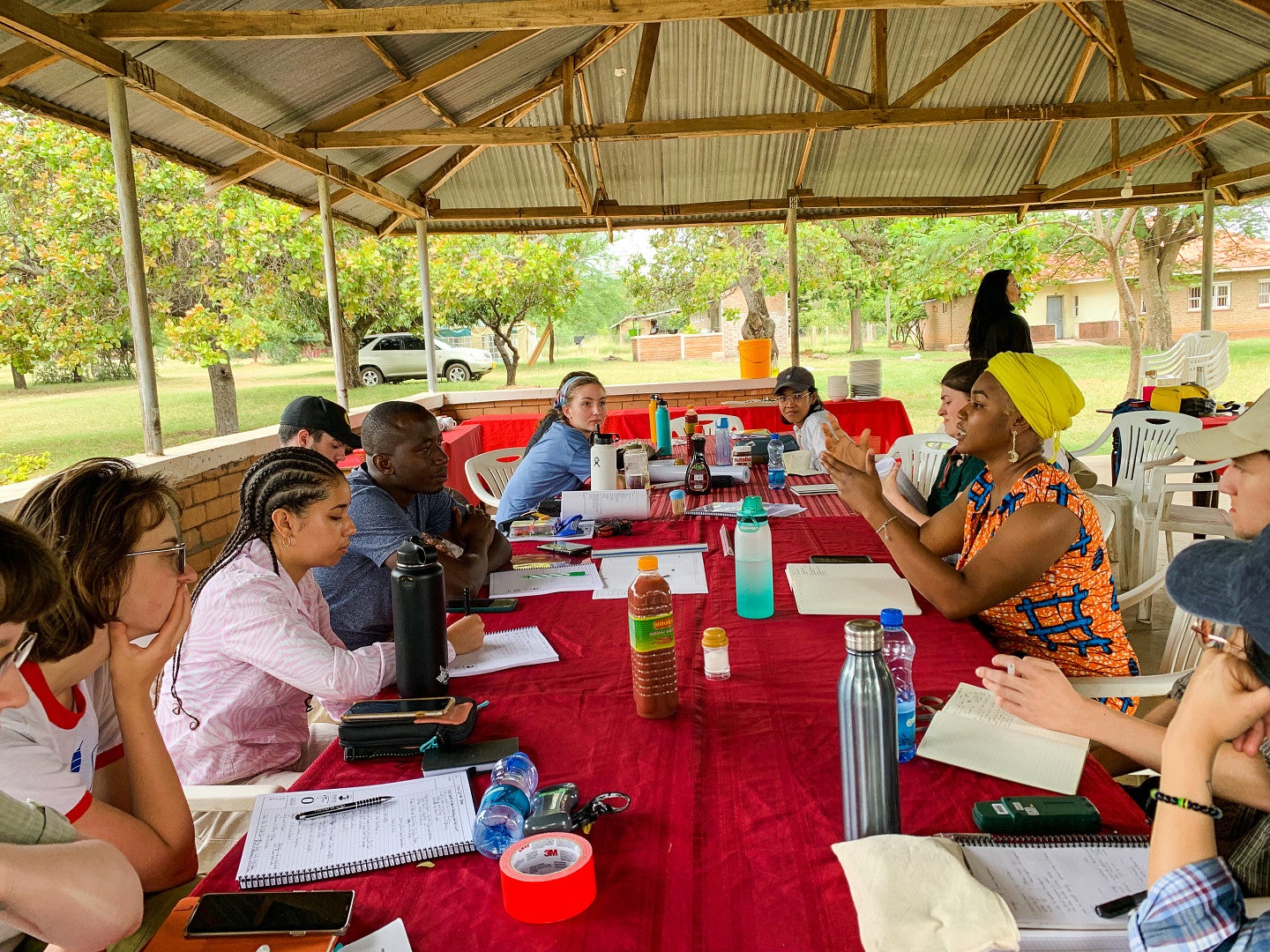
Photo courtesy of Michael Zaretsky
The history lesson and close collaboration with VLOP and SHED ensure that the study-abroad trip to Tanzania delivers an eye-opening experience for the students. Many students were excited at the prospect of engaging with a study abroad program that featured sensitive, humanitarian work.
"The idea of traveling to someplace I've never been to was exciting and I felt an opportunity to grow my worldview and learn more about humanitarian design. I worked in a rural part of the Sierra Nevada’s in a community that was drastically affected by the Dixie Fire in 2021 to the point we were evacuated for a month so I felt that going to Tanzania and learning about how community-oriented design is implemented there would help strengthen my designs and help this community to rebuild," explained Anna Finkbeiner. "I also liked the affordability of this study abroad trip and the length helped me continue to work. There's also the fact that an experience like going to rural Tanzania is one which would have been unlikely to happen without this trip so I viewed it as a once-in-a-lifetime experience."
The class worked with VLOP and developed 25 potential projects that could be completed by the 12 students during the week. After the preliminary work was completed and the appointed travel day arrived, the study abroad trip began with a long flight to Nairobi, Kenya, where the team was escorted through the Great Rift Valley into northern Tanzania onto the SHED compound where there were a number of facilities for the group including dorms, medical support, and a cook. After arriving late Saturday, the team rested on Sunday with the intention of starting their work on Monday morning. Once Monday morning arrived, the group began working on a variety of different projects including conducting a site survey, creating bat boxes to help house the increased bat population, helping with vegetable gardening on the site, a reusable menstrual products project, drawing set for a new roof on a school building, and more. The variety of projects and the experience with the Tanzania community created a lasting impression on the participants.

Photo courtesy of Michael Zaretsky
"In every interaction, whether it was casual, formal, or playful offered a humbling moment of self-reflection and insight into the lives of those whose life experience has been vastly different from my own. I met so many incredible people and continually found myself wrapped up in the simple joy of smiling and waving at people as we passed by," said Sammy Brusky. "I think the countries of Kenya and Tanzania have incredible natural beauty and the safari was incredible, but I don’t think my experience would’ve been as rich had I not been engaging with the locals."
After the team completed their week of service, they took a well-deserved break on a two-day safari in the Massai Mara and even had a chance to visit a familiar face in Nairobi. Andrew Kusewa, BArch '03, a Director at Boogertman & Partners Architects, one of the biggest architect firms on the continent of Africa and host to two UO architecture summer interns.
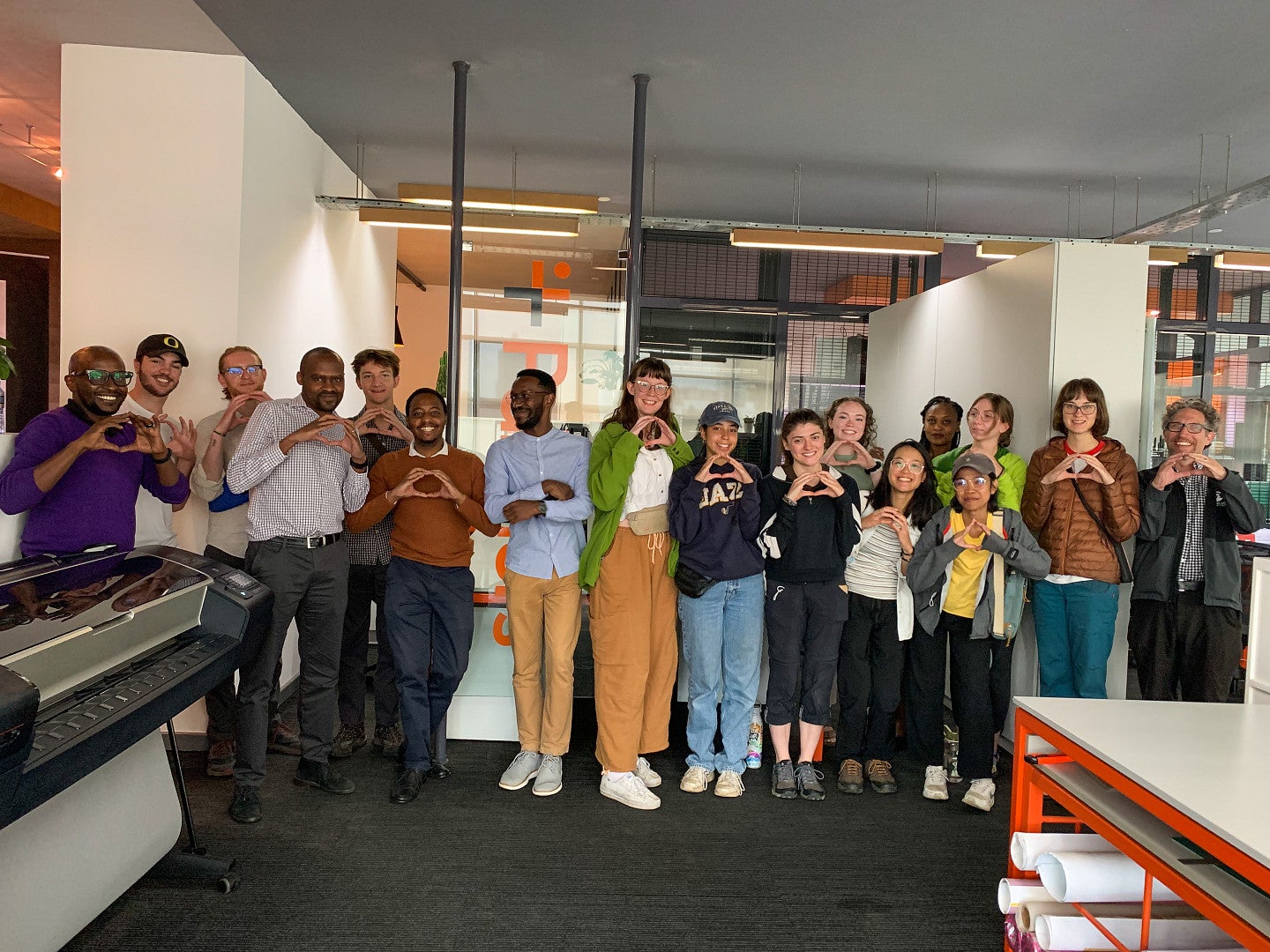
Photo courtesy of Michael Zaretsky
"The last day in Nairobi we met with one of our architecture alumni, Andrew Kusewa, who is a Director at Boogertman + Partners, one of the biggest architect firms on the continent of Africa," said Zaretsky. "With major offices spread throughout and they have two UO architecture interns for the summer, too. We met Andrew at the firm and spent an hour and a half seeing all of the firm's amazing projects. After that, we went to a giraffe sanctuary, shopping, and then started the long trek back."
"We were able to what kind of projects [Andrew] had and what design approach they used," said Feni Kurniati. "For architecture students, you gain a lot of insights when you visit a new community and experience the local community and work being completed by local architects. The cultural exposure is crucial to your education and growth as an architect."
This one-of-a-kind experience showcases just one way that the College of Design and its schools seek to offer unique, experiential learning opportunities for its students that has to be experienced to be believed.
"I found myself reflecting on the trip for weeks and perhaps even more than a month after the fact. It was not only an incredible learning experience from the perspective of architecture and humanitarian design, but it was a massive lesson on humanity," said Brusky. "Especially in the major of architecture, it is not often that people get the chance to experience a culture and buildings outside of Europe for their study abroad, and while Europe is an incredible place to visit, it is well studied in our other classes. Up until this trip, I felt my education was missing a piece, and I think that piece was in Africa. My advice would be to take full advantage of every opportunity presented to you in school. You will get to embrace the uncomfortable, confront your own biases, forge lasting friendships, and engage in perhaps the most meaningful work you’ll do while in school."
Lions and Giraffes and Cheetahs, Oh My!
Work wasn't the only planned activity for the students in Africa. Between meaningful projects, students had plenty of time to absorb the local culture and engage with the villagers through open-air meals and meetings, encounter local wildlife, and even shop. The following photos were provided by Architecture Department Head, Michael Zaretsky, from the team's well-deserved break on a two-day safari in the Massai Mara.
